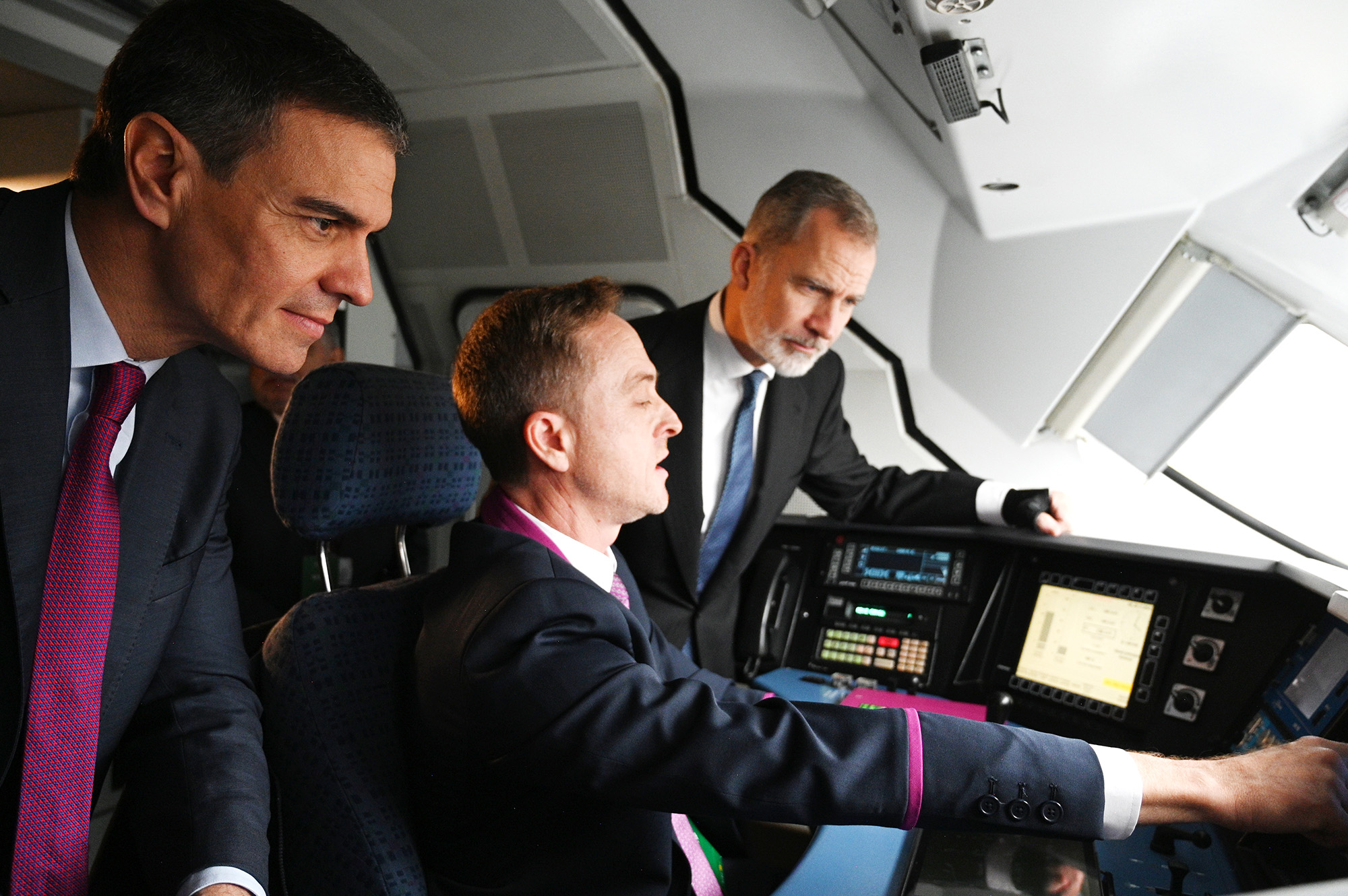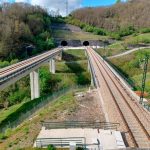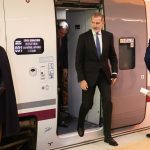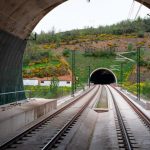 His Majesty King Felipe VI, the President of Spain’s Government, Pedro Sánchez, and the Minister of Transport and Sustainable Mobility, Óscar Puente, has inaugurated Pajares railway bypass, of the León – Asturias section of the Madrid – Asturias high-speed railway line, crossing Castilla y León.
His Majesty King Felipe VI, the President of Spain’s Government, Pedro Sánchez, and the Minister of Transport and Sustainable Mobility, Óscar Puente, has inaugurated Pajares railway bypass, of the León – Asturias section of the Madrid – Asturias high-speed railway line, crossing Castilla y León.
The event consisted of a train trip from Madrid Chamartín station to Oviedo, also attended by the presidents of Asturias, Adrián Barbón, and of Castilla y León, Alfonso Fernández Mañueco.
The ceremony was held at the Oviedo station on November 29, 2023, and marks “an unprecedented advance in the connection of Asturias” and Madrid, and a “public commitment that contributes to sewing Spain together with the thread of shared prosperity” while deepens the commitment of the Executive to bring high-speed trains to the whole of Spain,” the government says.
The 50 km Pajares railway bypass connects La Robla and Pola de Lena and 80% of the route runs through tunnels. The project involved the construction of 12 tunnels and 10 viaducts through the Cantabrian Mountains, to be crossed in less than 15 minutes. 41 km of the new line has been built in tunnels, including the 25-km-long Pajares tunnel. The entire line is equipped with the ERTMS level 2.
The construction work has been an unprecedented challenge. It has required more than 5,000 professionals and workers, and 5 tunnel boring machines working at the same time. The Pajares tunnel is equipped with the most advanced protection and safety equipment. It has 58 emergency exits, one every 400 metres, through galleries that connect the tunnels with each other (one of them allows evacuation in case of an incident in the other), in addition to two communication galleries to the outside: the one in Buiza (6 km) for incidents and emergencies and the one in Folledo (3 km), intended for maintenance.
The Pajares railway bypass will reduce the journey time for passengers between Asturias and Madrid by more than an hour and will allow freight trains to increase their load by up to 15% and be longer with up to four more wagons. “That is why the Variant has been referred to as <the most important work of the Atlantic Corridor>,”, the Minister of Transport said.
This electrified double track rail route cuts the current section through the Port of Pajares by 37 km and allows trains to run at a maximum speed of 275 km/h. The new line will allow Avril trains to run in the first quarter of 2024 expanding frequencies, capacity and services to Avilés town in Asturias. Renfe has already sold more than 70,000 tickets for journeys to Asturias with a forecast of 1.25 million passengers in its first year.
“Asturias and Castilla y León are now open to new investments and opportunities. Today, the geological barriers that separate Asturias from the rest of the peninsula are less imposing. It is an outstretched hand to unite the territories of a country proud of its diversity”, Pedro Sánchez said.
EUR 4 billion was the value of the project which obtained more than EUR 518 million European co-financing from the European Regional Development Fund (ERDF) and the Cohesion Fund to build the Pajares tunnel and the different subsections. The project also secured EUR 121.6 million funding from the ‘NextGenerationEU’ funds, within the framework of the from the European Recovery and Resilience Facility (ERF) for additional infrastructure, such as acoustic devices and security installations, and has received an additional contribution of EUR 3.2 million from to the financing of the Trans-European Transport Network (TEN-T).
“It is a great day for Asturias and for the whole of Spain, it is the most unique work of the Spanish railway system. This project allows Asturias to board the train of modernity, saving thousands of hours of travel time and CO2 emissions per year and attracting demand for goods and travellers to and from the three major hubs of activity in Asturias: Oviedo, Gijón and Avilés,” the Minister of Transport said.
Spain is modernising and constructing railway infrastructure in Asturias including the duplication of Valladolid – León section, doubling the track with mixed gauge between León and La Robla, the renewal of the La Pola – Oviedo railway line as well as the implementation of a programme to improve Cercanías network in the region.
Share on:











